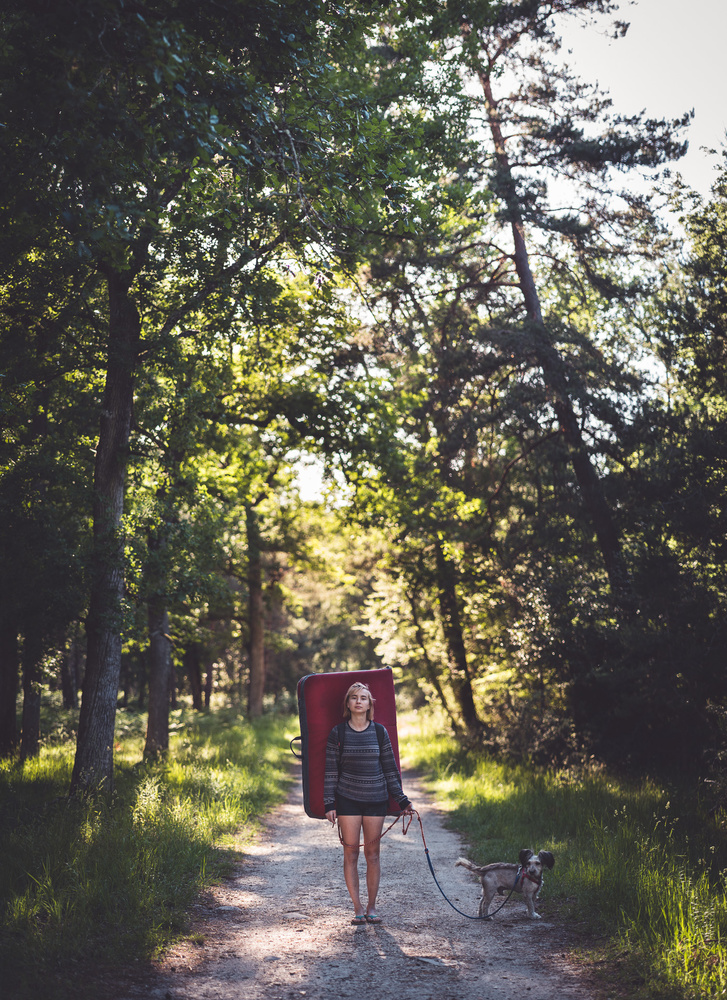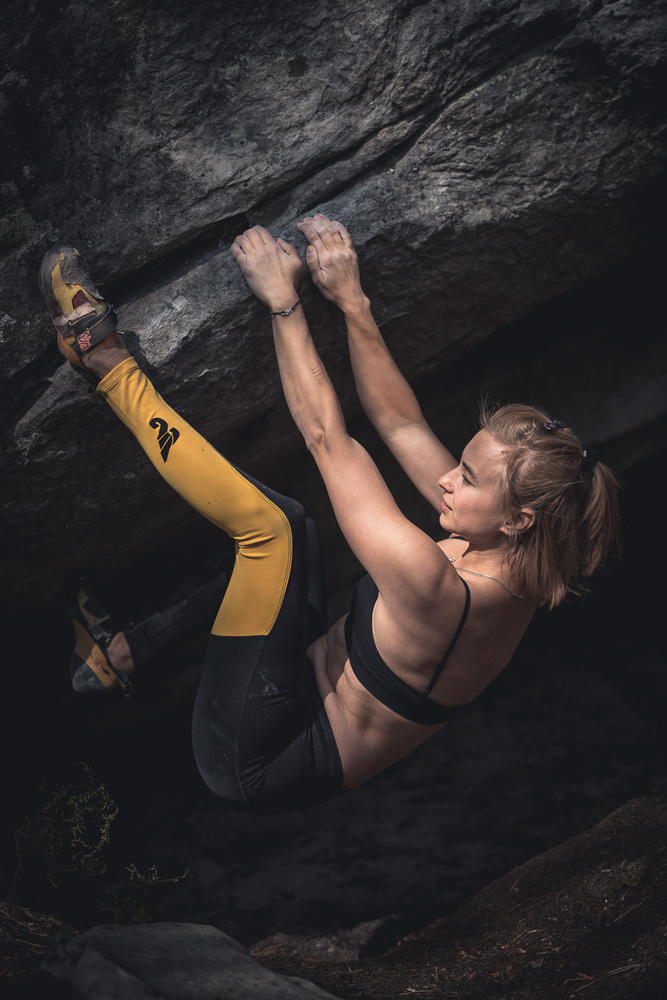Continuing a tradition of impressive innovation and compact, affordable glass, Samyang/Rokinon has produced a new lens for Sony full-frame cameras that is completely unique: an autofocus 75mm f/1.8 prime lens. How so much quality can be packed into something so tiny is remarkable.
Shortly after purchasing my Sony a7 III a few years ago, I received a review copy of Samyang’s 35mm f/2.8 lens, one of its earliest autofocus lenses for Sony. Given its price and featherweight form, my expectations were low. Little did I know how this lens would seriously impress me and become almost permanently attached to my camera as my lightweight, walkaround lens of choice.
Since then, Samyang has produced a number of highly regarded lenses for Sony, targeting customers on tight budgets who have little need for weather-sealing and like to travel light. The latest is the Samyang AF 75mm f/1.8 FE, a lens that was completely unexpected. It is innovative not only in form but also in its function, featuring a switch that converts your focus ring into an aperture ring. Given how few of us use manual focus these days, it now strikes me as surprising that this hasn’t been done before, and yet, it took a minnow-like Samyang to bring it to market. As an idea, it’s ingenious. More on this later.
It’s hard to emphasize just how tiny this lens is given its focal length. Here are the specifications:
- Focal Length: 75mm
- Maximum/Minimum Aperture: f/1.8 to f/22
- Angle of View: 32.9°
- Minimum Focus Distance: 2.26’ / 69 cm
- Maximum Magnification: 0.13x
- Optical Design: 10 Elements in 9 Groups
- Diaphragm Blades: 9, Rounded
- Image Stabilization: No
- Weather Sealing: No
- Filter Size: 58 mm (Front)
- Diameter: 2.56 in (65 mm)
- Length: 2.72 in (69 mm)
- Weight: 8.11 oz (230 g)
- Price: $399
75mm is an oddity, but one that I appreciate. When it comes to full-frame cameras, Leica has its APO-Summicron-SL 75mm f/2 ASPH at a shade over five grand, but that’s about as close as you will get. This Leica parallel is interesting, because the Samyang 75mm definitely does not have the girth that you’d expect from a portrait prime. At f/1.8, the typical 85mm lens — what many photographers would regard as the classic portrait length — has a width to it that the Samyang does not, and the form of the 75mm does make it look much more like something you’d attach to a Leica S camera or even a rangefinder. The dramatic difference in weight, however, is a quick reminder otherwise.
8.11 oz (230 g) is almost ethereal. The 75mm is only a little heavier than Sony’s plastic fantastic 50mm f/1.8 (6.56 oz / 186 g). Notably, Sony once told the world that mirrorless would be smaller and lighter, but it’s Samyang and its third party brethren that are delivering on that promise.
The immediate comparison to the Samyang 75mm is perhaps the Sony 85mm f/1.8, an excellent (notably, weather-sealed) lens, which adds 50% more to the price ($599) and more than 50% in weight (13 oz). For anyone who travels or is perhaps stepping up from APS-C and appreciates compact, lightweight gear, Samyang really wants to keep you happy, especially when many photographers would be very happy to see more f/1.8 glass.
The control ring does not have the smooth dampening that you'd expect on more expensive lenses, and there's not even an autofocus toggle, never mind a customizable button. There's just the mode button, which is simple and definitely not refined in the way that it clicks. Beyond that, the lightness and the materials give a sense that this is not a lens that's going to take a beating, an understandable compromise given the convenience. This does not have the feel of an expensive product — largely because it isn't.
Speaking of convenience, along with its plastic lens hood, it ships with an almost-rigid travel pouch. Samyang knows that this is a lens for casual, everyday use, and this pouch is designed for those days when you head out without a dedicated camera bag and your camera slung over a shoulder. The pouch means that you can throw the 75mm into the bottom of whatever day sack you're carrying and switch lenses when you feel the urge to take some portraits. This is a small touch that I really appreciate from Samyang, and more lens manufacturers should follow suit.
Sharp? Sharp Enough
As with the 35mm that I reviewed, the sharpness is surprisingly good, even wide open. Heavier, more expensive lenses will give better sharpness, but this Samyang is far sharper than it has any right to be. Gone are the days when third party lenses were a bit soft and smudgy at their largest apertures, and the Samyang 75mm is no exception. Images are fairly crisp, colors are good, bokeh is plentiful, aberrations are well controlled (there's a tiny bit of fringing if you search), and I couldn't find any distortion. Vignetting is present but not pronounced, as is lens flare. The center gets sharper when you close up to f/2.8, and the corners improve at around f/4.

100% crop.
The question is, what do you lose? The Sony 85mm, for all of its bulk, has weather-sealing and will give sharper images, and by all accounts, the autofocus will be snappier. This is not to say that the Samyang is sluggish, however; eye autofocus tracking was solid, and the lens performed well in low-light and low-contrast situations. It’s also relatively quiet.
Leave the Lump at Home
I’m Samyang’s perfect customer. I moved to mirrorless for smaller, lighter gear, and even lugging an 85mm f/1.8 lens felt like unnecessary bulk if I could swap it out for my nifty fifty. This is one of the reasons that the 50mm has been my people lens of choice for so long, the others being that I like being close to my subject and I’m typically more interested in environmental portraits as opposed to isolating my subject. The location is often as much a part of the photograph as the person, and for this reason, 85mm can make me feel slightly claustrophobic.
75mm might seem a slightly odd focal length, but for me, it offers an excellent compromise. It’s so incomprehensibly small and light that it will probably replace my nifty on most trips, and I’m happy to compromise the 10mm on what would be a more traditional portrait length. And the depth of field and resulting bokeh are fantastic. See below.
Autofocus
The autofocus is snappy enough, though not the fastest — more than quick enough for candid portraits, and much quicker than a lens of this size, weight, and length should be. I’ve not had a chance to use it out in the city, but I suspect that street photographers will be appreciative: this lens is so small and light that shooting tighter, bokeh-laden street work is possible while remaining relatively inconspicuous, and the autofocus will be sufficient for fast-moving scenes.

My first ever attempt at a Brenizer panorama (i.e., multiple shots with shallow depth of field stitched together). Worryingly addictive.
The Ingenious Switch
The 75mm contains a new switch: labeled “CUSTOM,” it has two modes. Mode 1 has the control ring look after manual focusing, while Mode 2 will switch it to governing the aperture. This is an excellent idea, though a few things are worth considering. Firstly, it requires quite a light touch, and it might be easy to knock your settings into something you don’t want. Secondly, controlling the aperture from the ring meant that the dial under my thumb no longer functioned. I can reallocate this rear dial to, say, ISO, but I’d need to tweak my customization every time I swapped out this lens.
Thirdly, and perhaps obviously, while the control ring does not click when changing apertures, it doesn’t give filmmakers a truly clickless aperture. The control is purely electronic, so it will shift in steps.
Bokeh, Bokeh, Bokeh
It's hard to spend $400 and get this much bokeh in an autofocus lens.
Conclusion
This lens is something of a niche product, but it's one that I genuinely appreciate and have a suspicion that other Sony shooters will also love. This is a perfect portrait lens for casual shooters in a form that is ludicrously compact and lightweight. Image quality is more than good enough for most users' needs, and the bokeh for such a small and affordable lens is glorious. As an alternative to the classic nifty fifty on days where you want to get a little tighter, it's the perfect option.
What I Liked
- Tiny
- Lightweight
- Gorgeous character for a lens of this size
What I Didn't Like
- Could be sharper, but admittedly, not at this size and weight
- The control ring is too easily turned when set up to change aperture
- Feels slightly delicate




























I have a few Samyang/Rokinons...for the $$ they are outstanding.
I have this lens and their 24mm. The only two lenses I have, both are fab.
I really like the colour rendering of Samyang lenses, this one reminds me of my 45mm f1.8. I was comparing it to your review of the Viltrox and although the Viltrox is a little sharper I prefer a less clinical/digital look. And then there's the weight comparison...